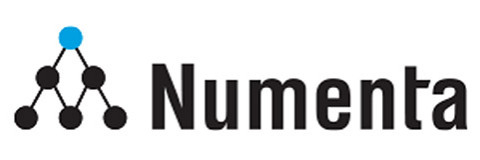REDWOOD CITY, Calif.--(BUSINESS WIRE)--Inputs to the brain from the eyes, ears, and skin are continually changing as we move. Yet our brain perceives objects in the world as stable. How the brain learns the structure of the world from rapidly changing inputs is a mystery.
In a new paper titled "A Theory of How Columns in the Neocortex Enable Learning the Structure of the World," published in the journal Frontiers in Neural Circuits, researchers at Numenta propose a new theory for how the brain learns models of objects through movement. “The basic idea is simple,” says Numenta Co-Founder Jeff Hawkins. “Existing ideas about how sensory input is processed in the brain are still valid. We are proposing that an important ingredient was missed, and with this missing ingredient, a large number of mysteries about the brain can be resolved.” The paper proposes that sensory input to the brain is paired with a location signal. The location is relative to the object being sensed. For example, an edge becomes an edge at a particular location on a cup. As we move our eyes and move our fingers, the brain learns the structure of objects as a set of features at locations on the object.
“Scientists have suspected something like this had to be happening in the brain somewhere,” explained VP of Research Subutai Ahmad. “We deduced it is happening throughout the neocortex, in each cortical column. The theory predicts that even the very first levels of processing in the brain are learning and recognizing complete objects. This is surprising; no one imagined it. But once you know what to look for, there is evidence supporting this prediction.”
Another surprising outcome of the theory is the brain doesn’t learn just one model of an object, but many parallel models, as each column in the cortex learns complete models. The theory shows that movement of the eyes and skin are necessary for learning, but after learning, objects can be recognized with one glance or one grasp of the hands. Although each column can only sense one part of an object, together they can reach a consensus.
The paper includes detailed simulations, anatomical and physiological evidence related to the theory, and testable predictions.
Among key findings presented in the paper:
- The brain calculates an ‘allocentric’ location for features of any given object. It is allocentric because the locations are relative to the object as opposed to relative to you.
- Specific layers in every cortical region receive sensory features and allocentric locations as input, and compute feature-location pairs. Those pairs are fed up to an output layer, which forms stable representations of objects.
- Lateral connections between cortical columns allow them to share partial information to recognize objects more rapidly.
Although the theory was deduced by studying touch, the neural structures that determine the location signal exist in every part of the neocortex, even in cortical regions that process language and high-level thoughts. This provocatively suggests that all ideas are associated with locations, even if those locations do not correspond to physical locations in the world. It suggests that our brains manipulate abstract concepts using the same mechanisms we use to manipulate physical objects.
“The theory introduced in this paper is refreshing and will influence how neuroscientists think about the neocortex. The study offers an elegant approach for integrating the motor and sensory modalities, and opens new possibilities,” said Prof. Dr. Mehmet Fatih Yanik, ETH Zurich Chair of Neurotechnology Laboratories.
The new theory is an important piece of Numenta’s overall goal to reverse-engineer the neocortex. Previous papers from Numenta have proposed how neurons make predictions and detect anomalies, how layers of neurons learn sequences of patterns, and why activity in the brain is sparse. Part of Numenta’s mission is to bridge the worlds of neuroscience and AI. Hawkins noted, “We believe the principles used by the brain, including the sensorimotor theory in the new paper, will be essential to create general artificial intelligence and sophisticated robotics.”
The Secret to Strong AI
In an editorial published in Medium, Hawkins describes the importance of the new theory to the advancement of artificial general intelligence. The piece, titled The Secret to Strong AI, also addresses the shortcomings being encountered in current AI techniques like deep learning and artificial neural networks – as have been acknowledged by other prominent technologists and industry leaders.
Reproducing Scientific Results
To allow other researchers to reproduce these results, Numenta has created a repository with the source code, data, and scripts used in the paper. Numenta researchers hope this information will encourage more scientists to experiment with Numenta’s theories and to provide feedback.
Further information and a video on the new research are available here.
About Numenta
Numenta scientists and engineers are working on one of science’s grand challenges: how the brain works and how brain principles will be used in Machine Intelligence. Founded in 2005, Numenta is developing a theory of how the neocortex works. We create software technologies based on this theory and apply them to machine learning applications for continuously streaming data. Numenta publishes its progress in scientific journals and makes all of its code public in an open source project.
Citation:
* Hawkins, J., Ahmad, S., and Cui, Y. (2017). A Theory of How Columns in the Neocortex Enable Learning the Structure of the World. Front. Neural Circuits 11, 81. doi:10.3389/FNCIR.2017.00081.



